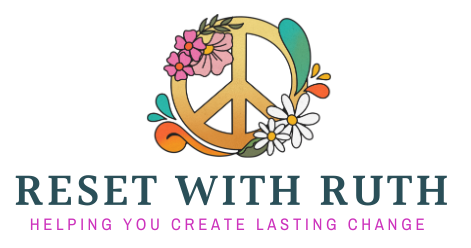To understand the concept of healing with sound, one needs to first accept the concept that everything in the Universe is made from energy. There is no ‘solid’ matter, just packets of energy vibrating at different frequencies. Those that vibrate at low frequencies form ‘solid’ matter, those that vibrate at higher energies for ‘liquid’ and gaseous matter, and those at very high energies form various types of electromagnetic radiation such as heat and light. Nonesense? Well, the Ancients have believed this theory for centuries and now modern science in the form of quantum mechanics and related fields are proving this to us ‘modern’ Humans.
All energy vibrates at an optimum frequency, hence all the cells, bone structure and organs of the body vibrate at an optimum frequency. When the body is vibrating at its optimum frequency, you are in the peak of physical health, happiness, contentment and well being. Unfortunately stress (in particular), illness and dis-ease cause a shift in the vibrational energy and this manifests itself as physical ailments or mental disorders.
I absolutely ADORE delivering a group, or individual sound therapy session. It feels like an expression of art as I dance through the vibrations and tones! The Beach Breath & Sound sessions have become much loved, as have the Somatic Sound Bath sessions inside The Reset Well-being Hub.
History of Sound Therapy
Sound therapy has deep roots in ancient civilizations. The Aboriginal Australians used the didgeridoo for healing over 40,000 years ago. In ancient Greece, Pythagoras explored the therapeutic effects of music, while Tibetan monks have long used singing bowls in spiritual ceremonies. The modern practice of sound therapy was further developed in the mid-20th century by pioneers like Sir Peter Guy Manners and Fabien Maman, who explored the healing frequencies of sound.
I bought my first gong from Phil — Scientia Sounds. Phil taught me the fundamentals of playing a gong and was always fascinated in the science and profound health benefits of a continued low vibration of a gong. So much so, he set up a partnership with a local university to collect data, which would prove its efficiency.
Benefits of Sound Therapy
For the Mind
Sound therapy can reduce stress and anxiety by promoting relaxation and mental clarity. The soothing vibrations help to calm the mind, making it easier to manage stress and improve focus. It’s very normal to also feel a flurry of thoughts and feelings and sensations when experiencing a sound bath. It’s a passive experience, which can often put pressure on us to “relax and be still”, when in actual fact, in can sometimes feel a little uneasy to settle, which is why it’s helpful to join sound baths with an experienced and qualified practitioner who can help and support you with the experience.
For the Body
The physical benefits of sound therapy include improved sleep, reduced pain, and enhanced immune function. The vibrations from sound therapy instruments can help to release tension and promote physical healing.
For the Self
Sound therapy fosters a deeper connection with oneself. It encourages mindfulness and self-awareness, helping individuals to tune into their inner needs and emotions. Within Reset Sound Therapy sessions, I always ensure that you’re supported to have an experience whereby you feel connected and empowered.
For Emotions
Sound therapy can help to balance emotions and release emotional blockages. The calming sounds promote a sense of peace and emotional well-being.
How Sound Therapy Works
Sound therapy works on the principle that everything in the universe, including our bodies, is in a state of vibration. When we are stressed or unwell, our body’s natural frequencies can become imbalanced. Sound therapy uses specific frequencies and vibrations to restore balance and harmony.
The Science Behind It
Sound waves travel through the air and interact with our bodies, affecting our brain waves and nervous system. Research has shown that sound therapy can slow down brain waves, promoting a state of deep relaxation similar to meditation. This state can help to reduce stress, improve mood, and enhance overall well-being.
Sound Therapy Instruments
At the moment, I’m enjoying the sounds of the following instruments… Paiste Symphonic Gong
Chinese Chau Gong
Crystal Sound Bowls
Crystal sound bowls produce pure, clear tones that can help to align the chakras and promote physical and emotional healing5.
Tuning Forks
Tibetan Sound Bowls
What to Expect at a Sound Bath
A sound bath is a deeply immersive experience where participants lie down and listen to soothing sounds produced by various instruments. The session typically lasts for 60 to 90 minutes and is guided by a trained practitioner – me! Participants can expect to feel relaxed, refreshed, and more in tune with their bodies and emotions.
Case Studies
Case Study 1: Reducing Anxiety
Case Study 2: Pain Management
Research has shown that sound therapy can be effective in managing chronic pain.
A study involving patients with fibromyalgia found that sound therapy helped to reduce pain and improve sleep quality. A large number of clients have experienced big shifts in pain management with regular bi-weekly sound therapy in a group or 1:1 setting.
Suggested Reading on Sound Therapy
- “The Healing Power of Sound” by Mitchell L. Gaynor: Explores the therapeutic potential of sound and music.
- “Sound Healing for Beginners” by Joshua Leeds: A practical guide to using sound for healing and well-being.
- “The Power of Sound” by Joshua Leeds: Delves into the science and benefits of sound therapy.
Sound therapy offers a holistic approach to well-being, addressing the mind, body, self, and emotions. By incorporating sound therapy into your routine, you can experience profound benefits and enhance your overall quality of life. You can book your spot on a group sound bath by checking out my sessions and events page!

